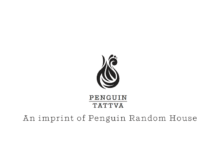The increase in penetration of the Internet and smartphones has helped in faster and wider spread of information especially in the developing world where a big chunk of society was earlier cut off from the mainstream information channels like TV. At the same time, greater and easier access to social media tools like WhatsApp and Facebook has resulted in the spread of misinformation or ‘fake news’ in both developed and developing world. In India, it is a common belief that the spread of ‘fake news’ is one of the main impetus for the recent increase in the number of lynchings and mob violence. Governments across the world are looking to put a lid on the menace of misinformation and mob behaviour spread via modern social media tools. Even private entities are proactively working on this front.
A recent study has found that younger readers are more likely to fact-check information if they have received media literacy training. The study was commissioned by the French Ministry of Culture and carried out by French audience measurement company Médiamétrie. The survey questioned 2,000 people between the ages of 15 and 34 on their news consumption habits.
As per the study, young people are important consumers of mobile information content. In particular, they make heavy use of social networks. About 71% of 15- to 34-year-olds consult the news daily via social networks, the latter being, for this generation, the first mode of access to information. About 69% consult daily news on their smartphone; it is the first resort to view the news, ahead of TV (61%) and the computer (51%).
The study also found that 32% of 15 to 34 year olds only use social networks or search engines to access online information content. It further indicates that, contrary to popular belief, young people are very interested in the news – 93% say that they are interested in information and 15% declare themselves ‘addicted to information’ while only 7% of young people say they are not interested in the news.
The study found that those who have received information and media literacy training (known as media and information education) are more likely to question and fact-check information they come across. Moreover, they consume news more frequently than those who haven’t taken part in training of this kind.
Initiative being taken by both government and private sector
The French government has doubled its investment in media literacy training; they have decided to make it a compulsory part of every student’s education. It is linked to civic education courses, and usually taught in the form of workshops. Areas covered as part of the training may include the viewing and decryption of news video, media creation, or analysis of current events.
France isn’t the only country ramping up efforts to equip students with tools to successfully navigate the information and media ecosystem. In light of the popularity of social media platforms along with the spread of misinformation online, Brazil made media analysis studies compulsory in December last year in a bid to teach schoolchildren how to identify ‘fake news.’
Private news organisations are also taking steps to boost media literacy. The Globe and Mail in Canada partnered with charity organisation WE last year. The partnership is aims to provide online learning and discussion aids on media literacy, as well as teaching resources for educators. In the Czech Republic, a number of news organisations actively taking part in improving media literacy. They are offering courses and academies on the topic open to the public.
In India, online news website The Quint is trying take on misinformation with its own fact-checking initiative and the help of its readers. The Quint launched its fact-checking initiative, WebQoof last year. It’s a newsroom-wide effort, with journalists producing informative articles and videos about spotting ‘fake news’ and working closely with regional and local media and a handful of fact-checking sites to debunk hoaxes and false claims. The Quint’s encourages its readers to submit for verification dubious stories they’ve come across on social media. A single such call to action prompted between 100 and 150 submissions. WebQoof is one of The Quint’s fastest growing segments in terms of readership.
(This story has inputs from WAN-IFRA)


















